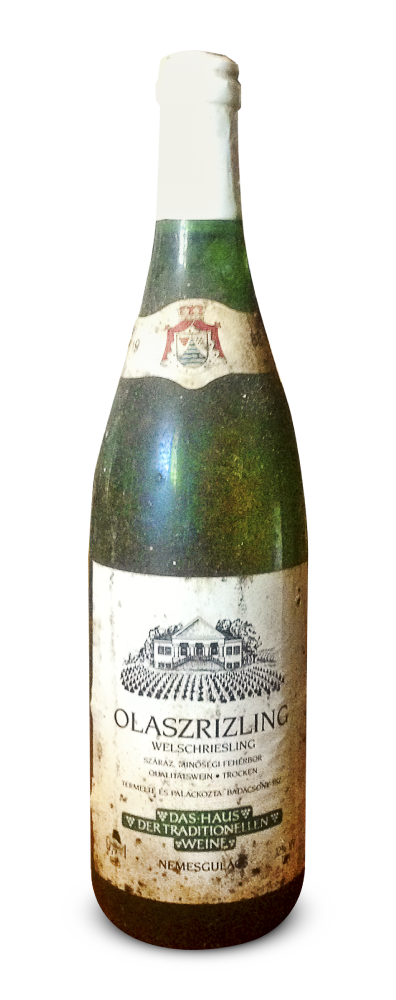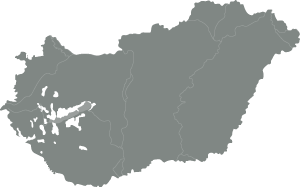Personal opinion:
Gems of outstanding quality that remained from the Socialist era when they were produced in state farms.
At that time people could produce wine, at most, for themselves - bottling and bottle retailing was inconceivable, as this right belonged to the Socialist state.
I never imagined that I would be pleased with these co-ops one day. These are unbelievable relics - time capsules, if you like.
These wines were bottled with the aim of exporting them. As far as I know these made it to the Vatican, the White House in Washington D.C. and the Kremlin in Moscow, etc.
Information:
We do not re-bottle or re-label the Museum wines - we offer them in their original bottles with the original content and original label.
The product picture shows the bottle that remained in the best condition for the sake of recognizability.
The product inventory shows the number of bottles that remained intact.
Unfortunately, not all the labels are undamaged!
Therefore it may happen that the label is damaged (torn, worn or mouldy).
About the Olaszrizling or “Italian Riesling” variety:
Olaszrizling is a variety of Italian or French origin belonging to the wine-producing variety (Vitis vinifera) of the family Vitaceae, and it is one of the most common white wine grapes in Hungary. It arrived to Hungary from France from the middle of the 19th century. In place of those vines destroyed in the big phylloxera epidemic, new ones were planted. At its best production sites on the Szent György Hill and Csopak its yields are already much better than in its original homeland.
Its stock is medium or weak, its canes are bushy and thin. Its cluster is small to medium-sized, packed, cylindrical and often has a side cluster. Its berries are small, yellow, round, barely velveted, and thin-skinned. Its flesh is soft, juicy, and neutral in taste. The taste of its wine often resembles that of bitter almond. It has a slight reseda aroma, its acids are gentle but their quantity depends on the production site. In northern Transdanubia, for example, the acids are the most gentle in Csopak, with the acidic character strengthening towards Badacsony and Balatonederics, and the strongest on the Somló. Within one site it is more acidic on the northern parts of the hills and more gentle on the southern parts.
It can be harvested in the first half of October. It ripens late therefore it favours warmer spots, southern hills. Its yield is abundant, and it is a variety of excellent quality. Its harvest is of almost constant quality but it is sometimes affected by rotting and vine-mildew. Its overripe grapes are used to make special quality wines.
Its unique characteristic is its great demand for magnesium; without that it may have deficiency diseases. A significant part of the magnesium gets into the fruit and from there into the wine so its wine is curative for cramps, etc. In Hungary the wine of the Olaszrizling grown on the basalt of the Badacsony wine region contains the most magnesium.
In Hungary we find extensive Olaszrizling plantations in the Badacsony, Csopak-Paloznak, Eger wine regions; it is practically grown in the entire country except for Tokaj-hegyalja.
It is widespread in Austria, especially in the southern and south-eastern parts of Styria, Burgenland, and in Weinviertel, where they make sparkling wine from it. In the Lake Fertő area they make noble rot dessert wine from the Olaszrizling. It is also grown in Romania. Similar names: Welschriesling, Taljanska grasevina, Riesling Italien, Rizling Vlassky, Nemes rizling, and Italian Riesling.
The region and its history:
In the Badacsony area, vines were grown in Roman times, and Emperor Probus had sizeable plantings here. At the time of the settlement of the Magyars in Hungary they already knew about vines and wine. They appreciated areas capable of growing vine. A significant part of the wine region was taken over by the church in the 13th century. In the 18th-19th century the Badacsony vermouth gained a similar reputation to that of the Tokaj aszú in Europe.
During the reconstruction after the phylloxera epidemic, supporting walls were built to prevent soil erosion. New varieties also entered the area. The Szürkebarát was introduced from France by monks. Due to the special soil content it evolved into a typical local variety, the Szürkebarát, which botrytises in good years.
The variety grown in the biggest amount is Olaszrizling that is in better years ripened on the stock longer, and is used to make ice wine or late-harvest hand-selected Olaszrizling. Szürkebarát, Tramini, Sárga muskotály, Rajnai rizling and Chardonnay are also present on the larger lands.
Kéknyelű or "Blue stalk" used to be a characteristic wine of the region. It was significantly confined by the frost damage of the 1980's but is experiencing a revival today, and will be an emblematic wine of the Badacsony region again in the near future.
Badacsony wines are typically full-bodied, fiery, aromatic and mineralized. Traditional wine-making and maturation in wooden barrels are characteristic. Although reductive wine-making and other modern technologies are also spreading, they have not significantly changed the character of the region's wine, yet.
Climate and geography:
Badacsony is the highest mountain in the Tapolca Basin; it stands between two bays of Lake Balaton. The circumference of the almost round mountain is 11 km, the diameter of its top region slightly elongated in the north-south direction is 1-1.5km, its highest point is 437.4 metres above sea level. Its hillside is covered up to 280 metres by various loose deposits that are excellent for growing vine, and its soil is basalt-based loess. It is covered by various loose deposits, Pannon clay and Pannon loess, above which there are basalt rocks.
Its climate is mild and balanced with high humidity. Because of the proximity of Lake Balaton the southern hills can also enjoy the sunshine reflected from the surface of the water, and therefore there is a very beneficial microclimate that makes the making of natural dessert wine possible.
The wine region includes the vine cadastre-based first and second class border sections of the following settlements: Ábrahámhegy, Badacsonytomaj, Badacsonytördemic, Balatonrendes, Balatonszepezd, Diszel, Gyulakeszi, Hegymagas, Káptalantóti, Kisapáti, Kővágóörs, Nemesgulács, Raposka, Révfülöp, Salföld, Szigliget, Tapolca.
NAME: MUSEUM IV
YEAR: 1988
VARIETY: Olaszrizling
WINE REGION: Badacsony
CLASS: Quality dry white wine
Product of Hungary
Bottle volume: 750ml
Alc. 12%vol
Contains sulphites


